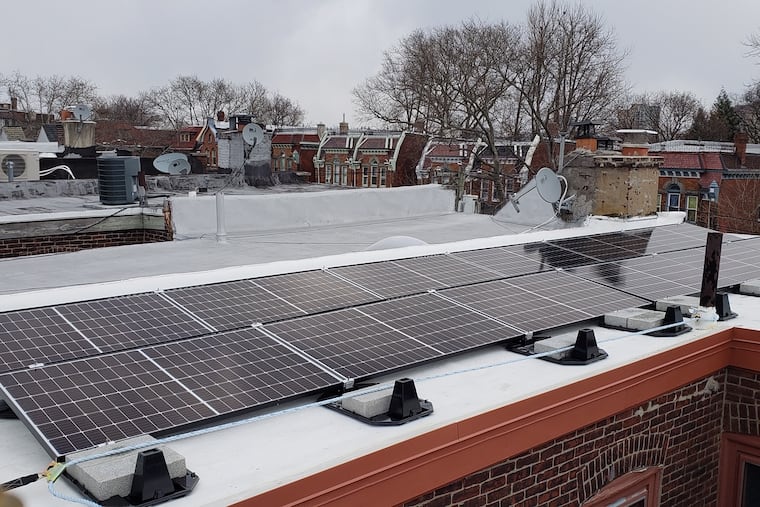Even with 10,000 solar industry jobs in Pa. and N.J., the region lags behind, report says
A new report says there are more than 10,000 jobs in the solar industry in Pennsylvania and New Jersey, but both states lag behind others in creating those jobs for a mix of reasons.

A new report says that there are more than 10,000 jobs in the solar industry in Pennsylvania and New Jersey, but that both states lag behind others in creating those jobs for a mix of reasons.
Nationally, solar has had its ups-and-downs, but overall, the number of solar-related jobs has grown from 93,000 to 249,000 since 2010, representing a 167% increase, according to the report by the Solar Foundation, an advocacy group.
The solar industry is driven by state and federal policies, tax credits, the cost of solar panels, government tariffs, and other factors that can swing from year to year, according to Ed Gilliland, the foundation’s senior director and author of the 2019 report.
“The market has turned around after two years of decline in 2017 and 2018 and started back on a growth track,” Gilliland said. “And we expect that to continue into 2020.”
Florida, Georgia, Utah, New York and Texas all saw the biggest increases out of the 31 states experiencing solar job growth. California lost the most jobs, but was still the largest employer within the industry.
Though solar represented only about 2.6% of overall electricity generation nationally, it employed twice as many workers as the coal industry, the report said. However, other fossil fuel industries, such as oil and natural gas, employ more than solar.
The Southeastern U.S. was a growth area because of falling solar panel costs, new state laws, and an improving parity of price per kilowatt hour, compared with other forms of electricity generation in the region.
The Solar Foundation broke the jobs down into three categories: residential, non-residential (commercial), and utility-scale.
Last year marked the end of a 30% federal tax credit for solar installations (it is stepping down now, and expires fully in two years), and many rushed to start projects, helping to fuel those jobs. In addition, the impact of tariffs imposed on solar panels by the Trump administration in 2018 was largely offset by the lower cost of producing the panels in Southeast Asia, the report said.
Solar-related businesses that were surveyed saw continued demand, with public policy the leading factor driving growth.
New Jersey, once a national leader among states, dropped to 12th, with 6,225 solar jobs in 2019, a 3% loss from 2018.
Gilliland, however, said he considers New Jersey a leader because of the commitment by Gov. Phil Murphy to achieve 50% of the state’s electricity generation from solar by 2030, and 100% by 2050 under its Clean Energy Program. Gilliland said that as expiring policies are replaced with new ones, the state’s solar jobs creation will improve.
“There is a phase-out of the solar renewable energy credit program, and as the state transitions to a new program coming down the pike, that creates some uncertainty in the market,” Gilliland said. “It’s very common to see states drop off when these types of transitions happen.”
And, he added, New Jersey “is always very aggressive and proactive on policies for renewable energy and solar. There’s no reason to believe it won’t pick back up again.”
He noted that New Jersey is still in the top five nationally in terms of residential solar jobs.
Pennsylvania, Gilliland said, is less aggressive in chasing renewables, though it saw a slight gain in solar jobs to 4,231 last year, a gain of 12.
The state’s Department of Environmental Protection launched a statewide planning effort to produce 10% of the state’s electricity from solar by 2030, but it is only a goal, not legislated, Gilliland noted.
Pennsylvania has relatively cheap electricity rates, mostly due to its natural gas and coal production, so the solar is less attractive than it is in New Jersey, where electricity prices are higher, Gilliland said.
Pennsylvania now gets less than 2% of its electricity from solar, while other states have reached 10% or more.
Delaware saw a nearly 6% increase in solar jobs, bringing the total to a still-modest 495.